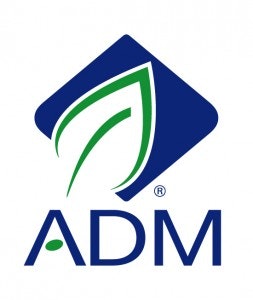
It doesn’t have to be so complicated. Controversy aside, there is one calculation that can bring everyone together to support ethanol. The calculation is so simple that you can do it on the back of a napkin. What if I told you that simply blending ethanol into motor gasoline saved the United States $50 billion in 2012? That represents the equivalent amount of crude oil displaced by ethanol. Don’t believe me? Here’s how it works from the first corn kernel to the last dollar.
Where does ethanol come from?
As you can imagine, most of the country’s capacity is centered in Corn Country. There are also facilities as far west as Oregon and as far east as Fulton, N.Y.

Source: Renewable Fuels Association
Who’s making all of this controversial stuff? There are numerous ethanol producers in the United States, but only three companies have annual production capacities exceeding 1 billion gallons. Archer Daniels Midland Company (NYSE:ADM), Valero Energy Corporation (NYSE:VLO), and POET have a combined capacity of more than 4.5 billion gallons — good enough for 35% of the entire domestic market. The balance comes from dozens of companies with operations of various sizes and sources as wacky as cheese and leftover beer. Investors have been hit with volatility in the ethanol market before, so this production represents a sizable revenue stream for each company.
How much ethanol is in gasoline?
In 2012, Americans consumed 134 billion gallons of gasoline that contained approximately 13 billion gallons of ethanol (a blend rate of 9.7%), according to the Energy Information Administration. Accounting for ethanol’s reduced energy content per gallon — just 67% of a gallon of gasoline — we can say that ethanol blending displaced 8.7 billion gallons of gasoline last year.
How much gasoline is in one barrel of crude?
Here’s the key step to the entire calculation. You may know that one barrel of crude oil contains 42 gallons of dinosaur sauce. What you may not know is that one barrel of crude oil does not produce 42 gallons of gasoline. Instead, refiners such as Phillips 66 (NYSE:PSX) and Exxon Mobil Corporation (NYSE:XOM) obtain just 19 gallons of gasoline from the refining process.

Source: EIA.
Don’t worry; the math is correct. One barrel of crude oil yields a total of 45 gallons of refined products.
So, blending ethanol into our motor fuels may have displaced 8.7 billion gallons of gasoline last year, but it offset a total of 458 million barrels of crude oil. By contrast, the United States imported 3.8 billion barrels of crude oil in 2012. Are you beginning to see its importance?
While refiners often gripe about paying to subsidize ethanol production, consider the broader context. Sure, the EPA estimates that the two refiners I mentioned will pay close to $11 billion each on ethanol blending credits in 2022 — the final year of the Renewable Fuel Standard mandate. But displacing gasoline in the American market allows more to be sold overseas, where margins are higher, thus boosting their bottom lines. Besides, I think the law will be changed before then in favor of refiners.
50 billion reasons
The final step is easy. The EIA reports that the average price of Brent crude in 2012 was $111.65 per barrel. That puts the final savings from displaced gasoline at $50,928,070,175 — all thanks to ethanol. To put that in perspective, that’s roughly the size of Apple Inc. (NASDAQ:AAPL)‘s share-repurchase program, the financial cost of Hurricane Sandy, or the amount Russia wants to spend on its space program by 2020.
As promised, here’s the back-of-the-napkin calculation:

See? It isn’t that complicated after all!
Foolish bottom line
Boosting America’s trade balance — and the bottom lines of refiners — is just one piece of the complicated jigsaw puzzle called ethanol. Why is it the default first-generation biofuel? Ethanol fermentation is a widely known and easily understood process. In addition, America has no shortage of corn (most years). I don’t believe it’s the best alternative fuel that we can be making from corn starch, but it is the best that we have until science bails us out with second- and third-generation fuels. Until then, we can enjoy a $50 billion-per-year discount on imported oil. Thanks, ethanol.
The article 50 Billion Reasons to Support Ethanol originally appeared on Fool.com and is written by Maxx Chatsko.
Fool contributor Maxx Chatsko has no position in any stocks mentioned. Check out his personal portfolio or his CAPS page, or follow him on Twitter, @BlacknGoldFool, to keep up with his writing on energy, bioprocessing, and emerging technologies.The Motley Fool has no position in any of the stocks mentioned.
Copyright © 1995 – 2013 The Motley Fool, LLC. All rights reserved. The Motley Fool has a disclosure policy.

